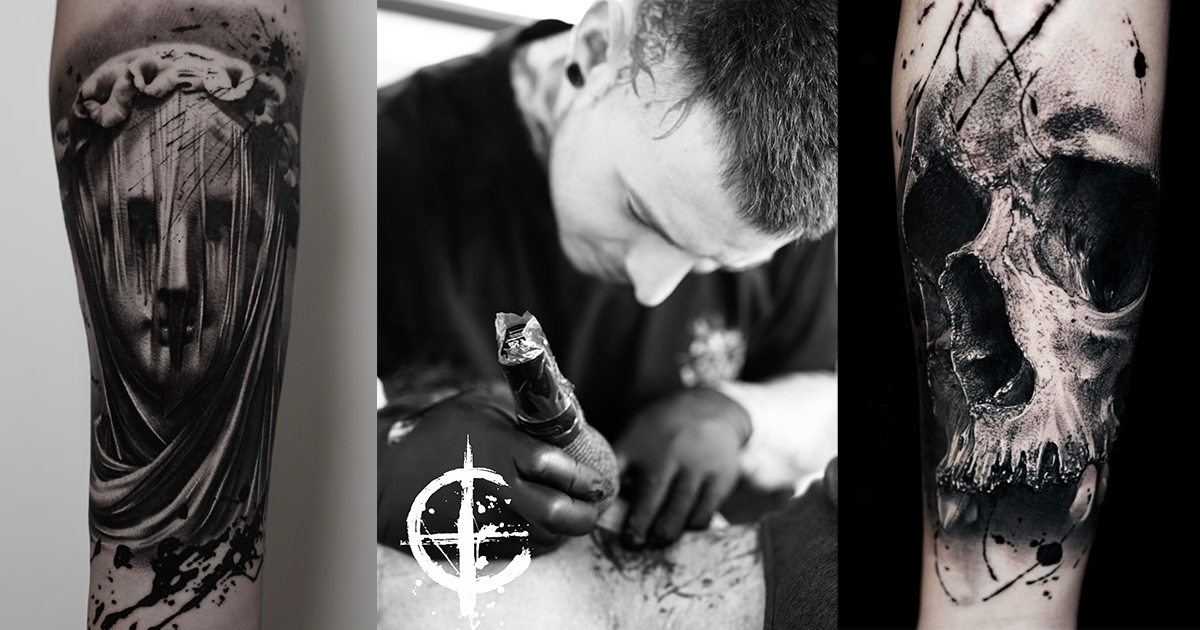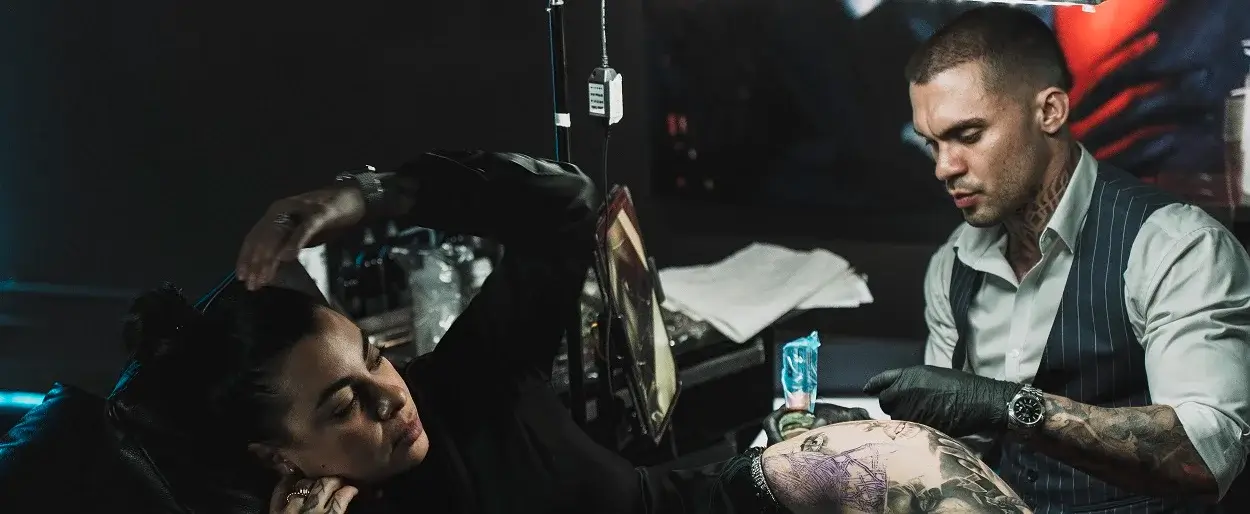Inked Mag Staff
November 2nd, 2021
Artist Spotlight: Facundo Gil
We spoke with black-and-grey guru Facundo Gil about where his love for the style came from, how he got into tattooing and much more.
To the uninitiated, black-and-grey tattoos may seem simple. Sure, an artist doesn’t have to master color theory and deal with a whole spectrum of possibilities the way a color realism specialist does, but don’t you ever make the mistake of thinking that it takes less expertise. It takes years of practice and dedication to master the art of black-and-grey; Facundo Gil has been putting in the work to fully comprehend his craft since he was 19.
We spoke with Gil about all things art in order to get a glimpse of how his meticulous tattoos come together.
Inked: When did you first discover a love of art?
Facundo Gil: From a young age I felt very called to and interested in art, although no one had pushed me to study art. Although I had completed my high school education in a technical school, it was this school that afforded me the opportunity to develop my interest in art and design.

How did you begin your tattoo career? Did you have an apprenticeship or learn on your own?
After finishing my high school studies, I discovered that I needed something more, where I could express myself with greater freedom.
After receiving my first tattoo at the age of 17, I discovered how beautiful the world of tattooing was. During the span of two years, I began creating various tattoos and living this world up close until I decided to buy my first apprentice kit at 19.
I never had a senior artist to guide me. My form of learning, a form which I recommend to those who want to enter the world of tattoos, is to find artists that you like and living the experience for yourself—getting a tattoo, getting to know the artist, and intending to remove all possible doubts and absorbing knowledge.

How did you find your way to black-and-grey?
I went through many styles when I first began tattooing. I made many tattoos—spanning from American traditional to watercolor to dotwork—but I was always fascinated by black-and-grey. For this reason, I became motivated to become a professional and learn everything I could in that style.
What is it about black-and-grey that continues to inspire you? What do you find most challenging about the style?
I admit, I am not a very agile person, so I have always had to push myself and work hard to become better. That drive is what keeps me going.

What are some of your favorite subject matter to tattoo?
I enjoy working with images that have high contrast. I take into account the passage of time and how my work will look on my clients within a few years. I thoroughly enjoy working with textures and volume, for which I look to set myself apart through the use of stains and geometric shapes.
How would you describe your signature style?
I don’t consider myself to have a specific style. I consistently intend to develop and learn from other artists but I am developing the type of art I wish to do.

Who are some of the artists (tattoo or otherwise) you’re inspired by?
I am deeply inspired by the works of Arlo DiCristina and Martin Aguaisol. Arlo’s digital composition and the use of high contrast by Martin have been fundamental for determining my path and unique style.
What are some of the most valuable life lessons you’ve learned from tattooing?
Upon entering the world of tattooing, I have dedicated myself to becoming a person who is willing to help as many people as I can, whether it is someone with experience or someone who is just beginning to tattoo. I have also learned to receive and give advice. I believe no one was born knowing and one can always learn something new despite extensive experience as a tattoo artist.

What other mediums of art have you worked in?
As I have mentioned, I never studied something related to art; therefore, until relatively recently, I simply designed and tattooed, having never explored other artistic mediums.
During COVID-19, having taken a break, I was able to create a space for myself to explore painting for the first time.
Can you walk us through your design process?
My process of designing a tattoo does not take place until the day of the appointment, when I am with my client. This assures that we are both on the same page and satisfied with the design. I take a photo of the body part location where my client would like to have their tattoo, to better see their anatomy in relation to the design. After receiving the references provided by my client, I am then able to transform their idea and create a unique design that looks even greater than what they had imagined. After this process, I then adhere the stencil to their skin and begin the tattoo.







Editor's Picks
Bridging Classical Art and Modern Tattooing
Esteban Rodriguez brings the discipline of classical fine art to the living canvas of skin, creating hyper-realistic tattoos that merge technical mastery with emotional depth.
Show Your Ink Fashions Brings Custom Style to Tattoo Culture
Show Your Ink Fashions creates custom shirts designed to showcase your tattoos as wearable art, blending fashion with personal expression.
The Ultimate “Superman” Tattoo Roundup: Just in Time for Superman’s Return to Screens
With Superman’s big return to theaters, fans are revisiting some of the most iconic ink inspired by the Man of Steel.














